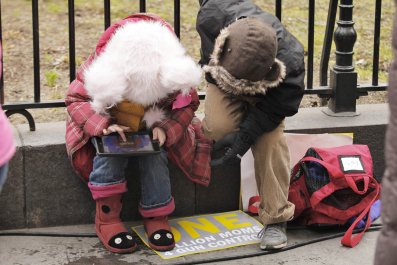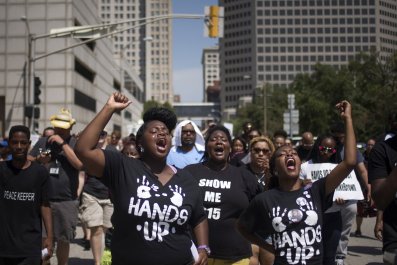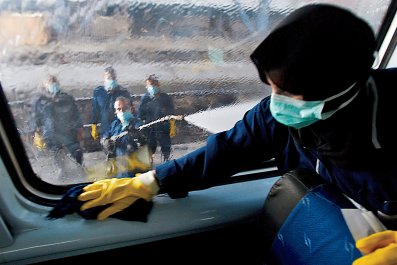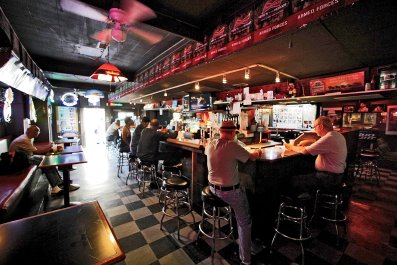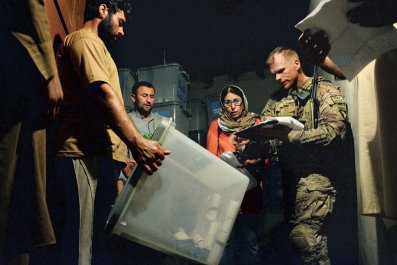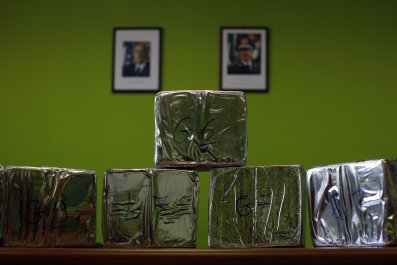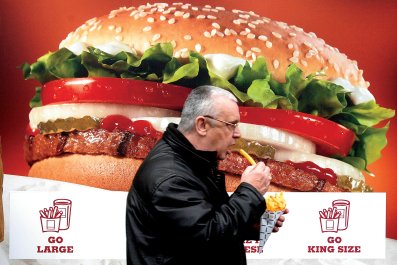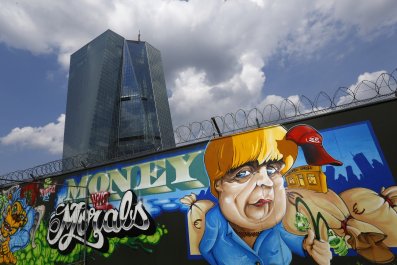Too-good-to-be-true pizza and the dazzle of Times Square may leave a lasting impression on first-time visitors to Manhattan, but nothing evokes the island better than the waves of yellow cluttering its asphalt in the form of ubiquitous cabs.
Some 14,000 taxis currently cruise, or more aptly, crawl through the five boroughs—a number that intrigues scientists at MIT's SENSEable City Lab, a research group working to improve the urban environment. The quality of a city's ability to function relies largely on maximizing the efficiency of its transportation systems, but achieving this is no small undertaking.
The burgeoning sharing economy's role in moving people from place to place is starting to have an impact. But for all the hype associated with Web-based car-sharing companies like ZipCar and Uber (which recently announced "Uberpool," a ridesharing program), a revolution in use of the roads will require tapping into the "science" of shareability—in other words, developing a method to reliably optimize the way we share cars.
The first step requires knowing what a sharing economy would actually look like. SENSEable City Lab (which tackles a diversity of fields on top of urban planning, including architecture, design, computer science and economics) recently unveiled HubCab, an interactive visualization tool that captures for the first time "the inner workings of the city from the previously invisible perspective of the taxi system."
And what better place to start than taxi-dense New York City, which introduced metered vehicles in 1907? Because its taxis are all regulated by one official authority (the city's Taxi and Limousine Commission), the Big Apple offered a more comprehensive collection of information than the other cities the team investigated.
Back in 2012, SENSEable City Lab's Michael Szell, a postdoctoral fellow specializing in the quantification of collective human behavior, worked with geographic information systems experts and other developers for nearly two months data-cleaning (i.e., doing all the grunt work involving processing raw data into a usable form) all 172 million taxi trips from 2011. Then, using OpenStreetMap, a service providing a free editable map of the world, the team used the GPS data to build an interactive map—no easy task.
Szell and his team first needed to chop up New York City's road network into 120-foot parcels. This yielded some 200,000 segments that had to be linked to the millions of taxi trips taken that year. (Taxi trips were matched to the closest street segment, rather than single locations, to make things more manageable.) Finally, the number of trips that went from one segment to another was calculated and divided into pickups and drop-offs.
"Users of the tool can see a representation of taxi flows from any given intersection to another during 2011," says Szell. "And all this can be sliced up into different times of the day."
The visualization tool's main purpose, says HubCab head Paolo Santi, is "to engage people and make them aware of the huge potential for ride sharing in New York. Residents can use it to get an idea of how many other individuals have a similar mobility pattern, which indicates the sharing potential."
The tool as it currently exists uses only historical data, but the lab is finalizing a contract with a major transportation company—Santi wouldn't say which one—to implement the first practical application of its data and approach. More will follow. "Practical, everyday use," says Santi, "would be linked to a graphical user interface of a taxi-sharing service to show sharing opportunities in real time." For example, Santi envisions an "e-hailing" app to facilitate the sharing process. After entering your trip details, a "share" button would pop up, and the app would tell you when a taxi will arrive.

Taxi companies, meanwhile, can employ the tool to identify those zones with high numbers of potentially shareable trips. A study led by Santi and published September 1, 2014, in the journal Proceedings of the National Academy of Sciences found that sharing trips yields a 30 percent reduction in service costs. The money saved would go not only to customers but to the taxi company and its employees as well.
"There are going to be efficiencies and positive environmental impacts," says Matthew Daus, a former commissioner of the New York City Taxi and Limousine Commission. "Using an app to get riders to share the yellow cab's a great idea."
Would riders put up with the extra time required to pick up and drop off others in a shared cab? "If we are good enough, we can design transportation systems in which the discomfort for passengers is minimal," says Szell, "so that the benefit/cost ratio becomes very large and sharing systems can be widely accepted by people." If, for example, riders were willing to put up with an extra three to five minutes per ride, the sharing that would result could allow a taxi operator to get by with a 40 percent smaller fleet—and charge significantly lower fares. As Santi writes in a 2013 paper, "Sharing taxi trips is a possible way of reducing the negative impact taxis have on cities," like debilitating gridlock.
Beyond reducing traffic, the project quantifies for the first time the potential reduction in pollution by providing instant stats on carbon dioxide emissions savings. A year of shared rides between West 60th Street near Central Park and a drop-off spot on Third Avenue and Ninth Street works out to a carbon reduction of 66,641 pounds.
Even though New York is a particularly taxi-dense metropolis, other cities will benefit from this research too. Over the course of several months, the team investigated a varied trio of other cities: Singapore, Vienna and San Francisco. Preliminary reports suggest that Singapore, thanks to cheap and abundant taxis, ended up being as strong as New York in taxi shareability—a metric developed by the SENSEable City Lab team to determine the average percentage of trips occurring in a city that could be shared. Both cities rated 95 percent in taxi shareability. San Francisco, too, came in at 95 percent shareability, thanks in part to its relatively small and compact business district. Vienna, on the other hand, with its highly developed transportation system was weaker in shareability, at about 80 percent.
This analysis is significant, Santi says, not just because it's the first time anyone has systematically quantified the potential for shareability in different hubs around the world, but also because it demonstrated that "shareability seems to obey a common law across different cities. If confirmed, this law could be used to predict shareability in cities for which we do not have data sets," Santi says. And this could create new taxi legislation that would redefine how fares are calculated and, more important, promote a shared taxi system.
Then there are the benefits of sharing not accounted for in the bottom line.
In a world where technology and efficiency have provoked greater loneliness, something as simple as sharing a ride in a taxi may improve our health and well-being. Arun Sundararajan, a New York University professor specializing in the digital economy, says that while technological progress yields greater institutional efficiency, "a byproduct is a growing drop in the level of connectedness people have." Sundararajan points to studies that show loneliness can have negative health effects. But there might be a way to counteract this depressing fact of contemporary life.
The sharing economy, he says, can "bring back that human connectedness into economic interactions that used to be individual, isolated, solitary and faceless."




